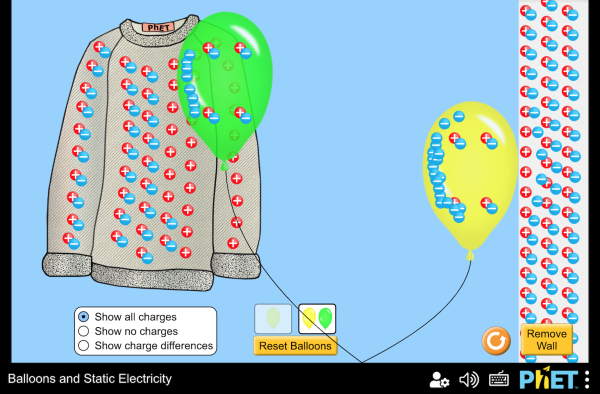

Get the Electricity & Magnetism Unit of Work here!
- How does electricity actually flow?
- What makes magnets become magnetic?
- Why is there electromagnetism and what does this tell us about electricity & magnetism?
- From series & parallel circuits to conductors & insulators, there’s a lot to explore & learn!
Includes cross-curricular teaching ideas, student quizzes, a sample marking rubric, scope & sequences & more.

School science visits since 2004!
– Curriculum-linked & award-winning incursions.
– Over 40 primary & high school programs to choose from.
– Designed by experienced educators.
– Over 2 million students reached.
– Face to face incursions & online programs available.
– Early learning centre visits too!
Why Does This Happen?
Rubbing an object can cause it to build up an electrical charge. This happens because the rubbing action can make one object pass electrons to another. Which way the electrons travel is dependent upon what materials you are rubbing together.
A loss of electrons makes an object positively charged and a gain of electrons makes an object negatively charged.
Opposite charges attract, like charges repel.
So how does the balloon work? The charge built up on the balloon is the opposite to the charge of the surface that it sticks to.
Opposites attract!
Variables to test
- Try rubbing the balloon on different cloth materials. Which works best?
- Does it matter about the speed of the balloon rubbing or how many times the balloon is rubbed?
- Try large vs small balloons
Interactive Simulation
Check out this interactive simulation created by the University of Colorado PhET Project below.
- Click on the balloon and drag it around the shirt and see how the electrons interact.
- Bring the balloon into the clear space and let it go to see where it is attracted.
- Watch what happens to the electrons on the wall as you bring the balloon closer.
PhET Interactive Simulations
University of Colorado Boulder
https://phet.colorado.edu
Experiment extension: Rising ghosts!
Create a Buzz!
Years 3 to 6
Maximum 30 students
Workshop or show (NSW & VIC)
60 or 90 minutes
Online Class Available
STEM Full Day Accelerator - Primary
Designed from real classroom experiences, this modular day helps you create consistently effective science learning that directly address the new curriculum with easily accessible and cost-effective materials.































Comments